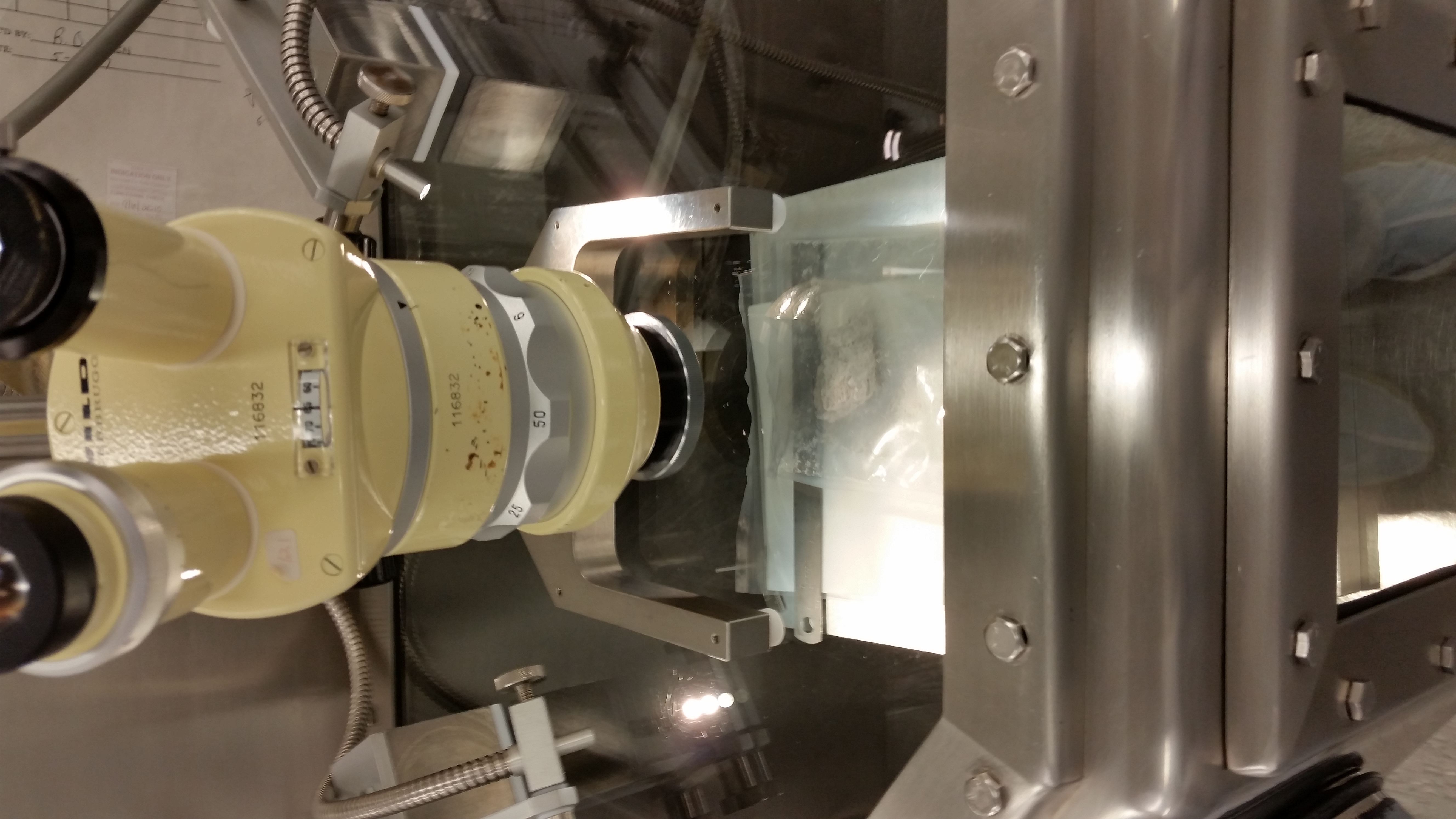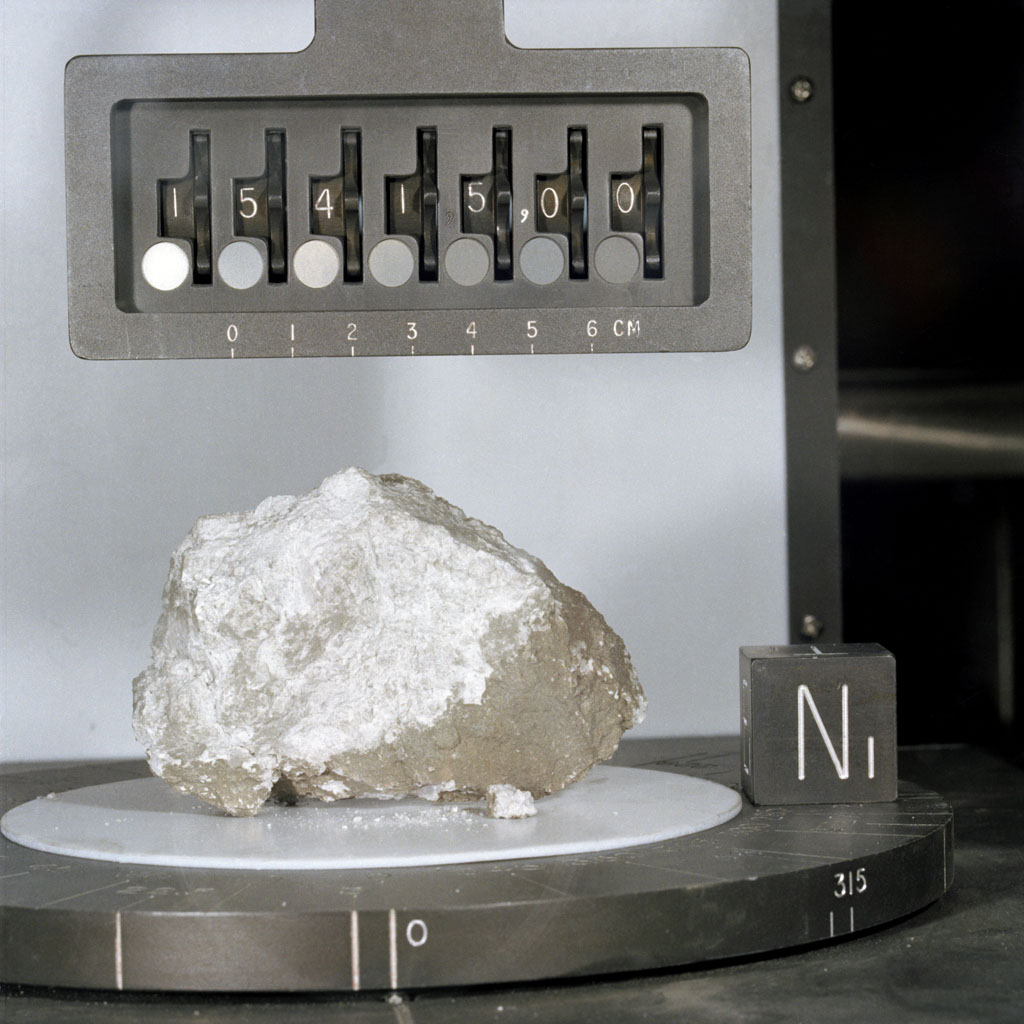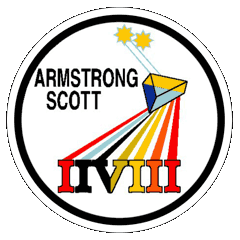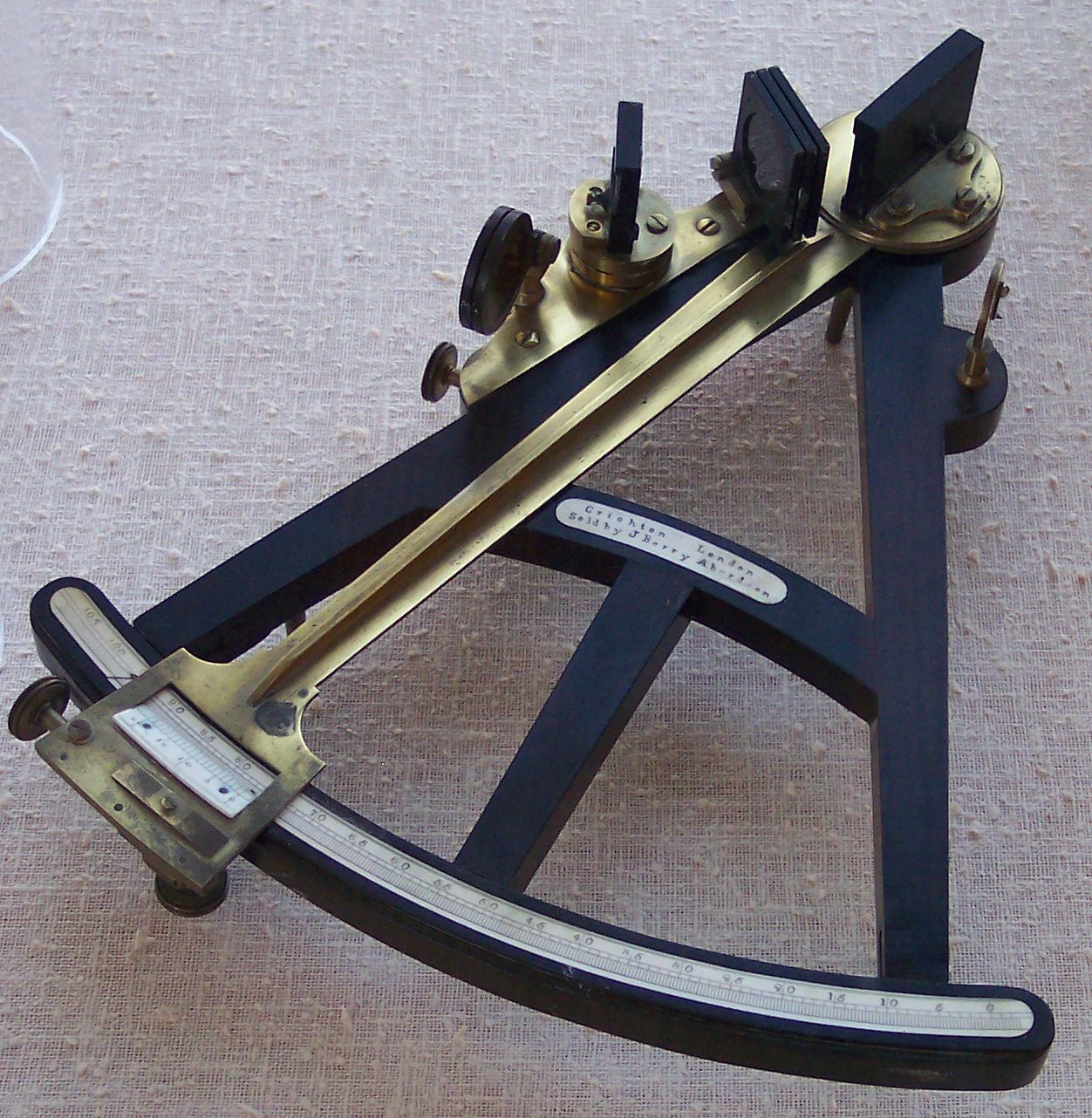|
Mons Hadley Delta
Mons Hadley Delta (δ) is a massif in the northern portion of the Montes Apenninus, a range in the northern hemisphere of the Moon adjacent to Mare Imbrium. It has a height of 3.6 km above the plains to the north and west. To the north of this mountain is a valley that served as the landing site for the Apollo 15 expedition. To the northeast of this same valley is the slightly larger Mons Hadley peak with a height of about 4.6 km. To the west of these peaks is the sinuous Rima Hadley rille. These features were named after the English mathematician and inventor of the octant John Hadley. On the Apollo 15 mission in 1971, the astronauts David Scott and James Irwin explored the lower reaches of the north slope of Mons Hadley Delta, and collected many samples which were returned to earth. Station 2 was near St. George crater, and Stations 6, 6A, and 7 were at or near Spur crater. They found the famous "Genesis Rock", sample 15415, at Spur. A clast of anorthosite wi ... [...More Info...] [...Related Items...] OR: [Wikipedia] [Google] [Baidu] |
List Of Mountains On The Moon
This is a list of mountains on the Moon (with a scope including all named ''mons'' and ''montes'', planetary science jargon terms roughly equivalent to 'isolated mountain'/'massif' and 'mountain range'). Caveats * This list is not comprehensive, as surveying of the Moon is a work in progress. * Heights are in meters; most peaks have not been surveyed with the precision of a single meter. * Mountains on the Moon have heights and elevations/altitudes defined relative to various vertical datums (referring to the lunoid), each in turn defined relative to the center of mass (CoM) of the Moon. *: — the U.S. Army Mapping Service datum was established 1,737,988 meters from the CoM. *: — the U.S. Defense Mapping Agency used 1,730,000 meters. *: — The '' Clementine'' topographic data use 1,737,400 meters as the baseline, and show a range of about 18,100 meters from lowest to highest point on the Moon. * This is not a list of the highest places on the Moon, meaning those farthe ... [...More Info...] [...Related Items...] OR: [Wikipedia] [Google] [Baidu] |
John Hadley
John Hadley (16 April 1682 – 14 February 1744) was an England, English mathematician, and laid claim to the invention of the octant (instrument), octant, two years after Thomas Godfrey (inventor), Thomas Godfrey claimed the same. Biography He was born in Bloomsbury, London the eldest son of George Hadley of Osidge, East Barnet, Hertfordshire and his wife Katherine FitzJames. His younger brother George Hadley became a noted meteorologist. In 1717 John became a member (and later vice-president) of the Royal Society of London. In 1729 he inherited his father's East Barnet estate. He died in East Barnet in 1744 and is buried in the local churchyard with other members of his family. He had married Elizabeth, daughter of Thomas Hodges, FRS (former Attorney General of Barbados) and had one child, a son and heir John, born in 1738. Work In 1730 Hadley invented the reflecting octant, which could be used to measure the altitude of the sun or other celestial sphere, celestial obje ... [...More Info...] [...Related Items...] OR: [Wikipedia] [Google] [Baidu] |
Jonathan's Space Report
''Jonathan's Space Report'' (JSR) is a newsletter about the Space Age hosted at Jonathan's Space Page. It is written by Jonathan McDowell, a Center for Astrophysics Harvard & Smithsonian astrophysicist. It is updated as McDowell's schedule permits, but he tries to publish two issues each month. Originally, the website was hosted on a Harvard University account, but it was moved in late 2003 to a dedicated domain. Started in 1989, the newsletter reports on recent space launches, International Space Station activities, spacecraft developments, and newly released space-related data. McDowell's report occasionally corrects NASA The National Aeronautics and Space Administration (NASA ) is an independent agencies of the United States government, independent agency of the federal government of the United States, US federal government responsible for the United States ...'s official web sites, or provides additional data on classified launches that are not available elsewhere ... [...More Info...] [...Related Items...] OR: [Wikipedia] [Google] [Baidu] |
Cambridge University Press
Cambridge University Press was the university press of the University of Cambridge. Granted a letters patent by King Henry VIII in 1534, it was the oldest university press in the world. Cambridge University Press merged with Cambridge Assessment to form Cambridge University Press and Assessment under Queen Elizabeth II's approval in August 2021. With a global sales presence, publishing hubs, and offices in more than 40 countries, it published over 50,000 titles by authors from over 100 countries. Its publications include more than 420 academic journals, monographs, reference works, school and university textbooks, and English language teaching and learning publications. It also published Bibles, runs a bookshop in Cambridge, sells through Amazon, and has a conference venues business in Cambridge at the Pitt Building and the Sir Geoffrey Cass Sports and Social Centre. It also served as the King's Printer. Cambridge University Press, as part of the University of Cambridge, was a ... [...More Info...] [...Related Items...] OR: [Wikipedia] [Google] [Baidu] |
NASA
The National Aeronautics and Space Administration (NASA ) is an independent agencies of the United States government, independent agency of the federal government of the United States, US federal government responsible for the United States's civil list of government space agencies, space program, aeronautics research and outer space, space research. National Aeronautics and Space Act, Established in 1958, it succeeded the National Advisory Committee for Aeronautics (NACA) to give the American space development effort a distinct civilian orientation, emphasizing peaceful applications in space science. It has since led most of America's space exploration programs, including Project Mercury, Project Gemini, the 1968–1972 Apollo program missions, the Skylab space station, and the Space Shuttle. Currently, NASA supports the International Space Station (ISS) along with the Commercial Crew Program and oversees the development of the Orion (spacecraft), Orion spacecraft and the Sp ... [...More Info...] [...Related Items...] OR: [Wikipedia] [Google] [Baidu] |
Anorthosite
Anorthosite () is a phaneritic, intrusive rock, intrusive igneous rock characterized by its composition: mostly plagioclase feldspar (90–100%), with a minimal mafic component (0–10%). Pyroxene, ilmenite, magnetite, and olivine are the mafic minerals most commonly present. Anorthosites are of enormous geologic interest, because it is still not fully understood how they form. Most models involve fractional crystallization (geology), separating plagioclase crystals based on their density. Plagioclase crystals are usually less dense than magma; so, as plagioclase crystallizes in a magma chamber, the plagioclase crystals float to the top, concentrating there. Anorthosite on Earth can be divided into five types: # Archean anorthosites # Proterozoic anorthosite (also known as massif or massif-type anorthosite) – the most abundant type of anorthosite on Earth # Layers within Layered intrusion, Layered Intrusions (e.g., Bushveld Igneous Complex, Bushveld and Stillwater igneous com ... [...More Info...] [...Related Items...] OR: [Wikipedia] [Google] [Baidu] |
Genesis Rock
The Genesis Rock (sample 15415) is a sample of Moon rock retrieved by Apollo 15 astronauts James Irwin and David Scott in 1971 during the second lunar extravehicular activity, EVA, at Spur (lunar crater), Spur crater on Earth's Moon. With a mass of , it is currently stored at the Lunar Sample Laboratory Facility in Houston, Houston, Texas. Rock Chemical analysis of the Genesis Rock indicated it is an anorthosite, composed mostly of a type of plagioclase feldspar known as anorthite. The rock was formed in the early stages of the Solar System, at least 4 billion years ago. It was originally thought they had found a piece of the Moon's Geology of the Moon, primordial crust, but later analysis initially showed that the rock was only 4.1 ± 0.1 billion years old, which is younger than the Moon itself, and was formed after the Moon's crust had already solidified. Research has shown that the Genesis Rock is not the oldest sample recovered from the moon, with sample Big_Bertha_(lunar ... [...More Info...] [...Related Items...] OR: [Wikipedia] [Google] [Baidu] |
Spur (lunar Crater)
Spur is a feature on Earth's Moon, a crater in the Hadley–Apennine region. Astronauts David Scott and James Irwin visited it in 1971, on the Apollo 15 mission, during Extra-vehicular activity, EVA 2. Spur was designated Geology Station 7. Spur is located on the north slope of Mons Hadley Delta, about 200 m above the plain to the north. It is east of the much larger St. George (crater), St. George crater, and about 5 km south of the Apollo 15 landing site itself. The astronauts found the "Genesis Rock", sample 15415, at Spur. The sample contains a large clast of anorthosite, and Dave Scott said "Guess what we just found! I think we found what we came for" as he examined the sample. They also found samples 15445 and 15455, so-called black and white breccias, which are thought to be impact melt breccia resulting from the Mare Imbrium, Imbrium basin impact event.To a Rocky Moon: A Geologist's History of Lunar Exploration. Don E. Wilhelms, University of Arizona Press (1 ... [...More Info...] [...Related Items...] OR: [Wikipedia] [Google] [Baidu] |
James Irwin
James Benson Irwin (March 17, 1930 – August 8, 1991) was an American astronaut, aeronautical engineer, test pilot, and a United States Air Force Aviator, pilot. He served as Lunar Module pilot for Apollo 15, the fourth human lunar landing. He was the List of people who have walked on the Moon, 8th person to walk on the Moon. Early life and education Irwin was born March 17, 1930, in Pittsburgh, Pennsylvania, of Scottish American, Scottish, German Americans, German (maternal side) and Irish American, Irish descent, to parents James William Irwin (1896–1978), a United States Army, U.S. Army World War I veteran, and Elsa Mathilda Irwin (; 1898–1993) who had German ancestry. Irwin's paternal grandparents emigrated to the U.S. from Altmore Parish at Pomeroy, County Tyrone, Pomeroy in County Tyrone, Ireland (now Northern Ireland) around 1859. In 1941, James Irwin lived at 6006 Grand Boulevard in New Port Richey FL and attended Pierce Elementary School (now the site of th ... [...More Info...] [...Related Items...] OR: [Wikipedia] [Google] [Baidu] |
David Scott
David Randolph Scott (born June 6, 1932) is an American retired test pilot and NASA astronaut who was the List of Apollo astronauts#People who have walked on the Moon, seventh person to walk on the Moon. Selected as part of the NASA Astronaut Group 3, third group of astronauts in 1963, Scott flew to space three times and commanded Apollo 15, the fourth lunar landing; he is one of four surviving Moon walkers and the only living commander of a spacecraft that landed on the Moon. Before becoming an astronaut, Scott graduated from the United States Military Academy at West Point and joined the Air Force. After serving as a fighter pilot in Europe, he graduated from the U.S. Air Force Test Pilot School, Air Force Experimental Test Pilot School (Class 62C) and the Aerospace Research Pilot School (Class IV). Scott retired from the Air Force in 1975 with the rank of colonel, and more than 5,600 hours of logged flying time. As an astronaut, Scott made his first flight into Outer ... [...More Info...] [...Related Items...] OR: [Wikipedia] [Google] [Baidu] |
Octant (instrument)
The octant, also called a reflecting quadrant (instrument), quadrant, is a reflecting instrument used in navigation. Etymology The name ''octant'' derives from the Latin ''octans'' meaning ''eighth part of a circle'', because the instrument's arc is Circular sector, one eighth of a circle. ''Reflecting quadrant'' derives from the instrument using mirrors to reflect the path of light to the observer and, in doing so, doubles the angle measured. This allows the instrument to use a one-eighth of a Turn (geometry), turn to measure a quarter-Turn (geometry), turn or Circular sector, quadrant. Origin of the octant Newton's reflecting quadrant Isaac Newton's reflecting quadrant was invented around 1699. A detailed description of the instrument was given to Edmond Halley, but the description was not published until after Halley's death in 1742. It is not known why Halley did not publish the information during his life, as this prevented Newton from getting the credit for the inven ... [...More Info...] [...Related Items...] OR: [Wikipedia] [Google] [Baidu] |
Moon
The Moon is Earth's only natural satellite. It Orbit of the Moon, orbits around Earth at Lunar distance, an average distance of (; about 30 times Earth diameter, Earth's diameter). The Moon rotation, rotates, with a rotation period (lunar day) that is synchronized to its orbital period (Lunar month#Synodic month, lunar month) of 29.5 Earth days. This is the product of Earth's gravitation having tidal forces, tidally pulled on the Moon until one part of it stopped rotating away from the near side of the Moon, near side, making always the same lunar surface face Earth. Conversley, the gravitational pull of the Moon, on Earth, is the main driver of Earth's tides. In geophysical definition of planet, geophysical terms, the Moon is a planetary-mass object or satellite planet. Its mass is 1.2% that of the Earth, and its diameter is , roughly one-quarter of Earth's (about as wide as the contiguous United States). Within the Solar System, it is the List of Solar System objects by ... [...More Info...] [...Related Items...] OR: [Wikipedia] [Google] [Baidu] |







